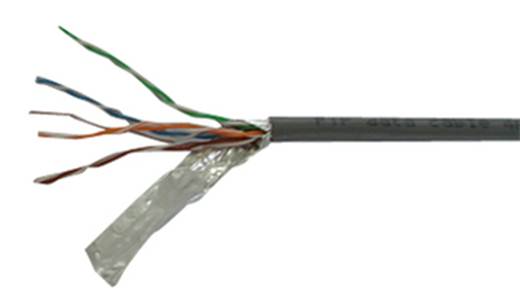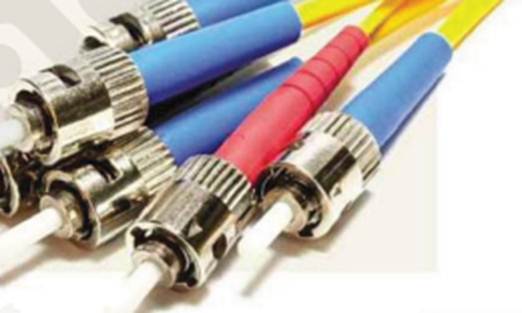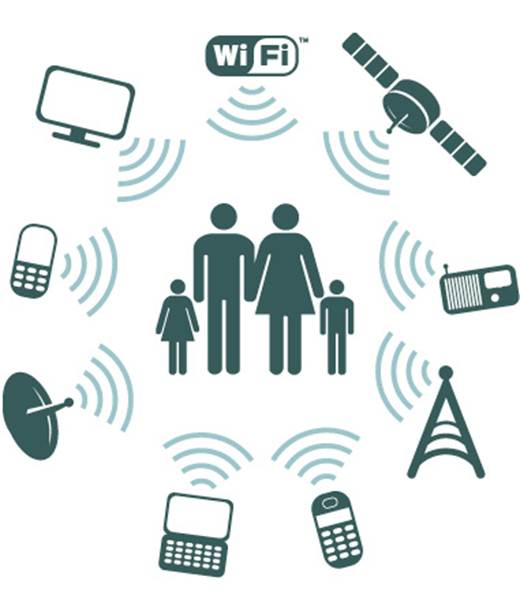LAN cabling is more properly called UTP,
for unshielded twisted pair, and what that means is that each LAN cable
contains four pairs of wires, with each pair entwined around one another like
the strands of DNA. The whole point of this is that the signals running down
those wires are so weedy that they could be completely wiped out by
interference from all manner of nearby devices, but once they’re entwined then
what’s bad for one half of the pair is evened out by a balancing effect on the
other half. That’s why a LAN can run on as little as a single volt (at slower
speeds) potential difference to pump data the best part of 100m. Contrast this
with the tongue-tingling 50V employed by old fashioned analogue telephones. So
which is the nastier baddy when it comes to electrosmog? Come to think of it,
if this whole idea were as important as it’s made out, why is there no rational
point of reference, say an EU-standard electrosmog impact sticker on every item
of electrical equipment, never mind on every item of networking equipment?

UTP
network cable
The simplest answer, of course, is that
it’s all complete hogwash, and anyone who pipes up about discomfort when
working with new technology is a prize chump, to be ridiculed and ignored. I
have to say that I find that position almost as absurd as the
superstition-driven electrosmog dogma. I’m pretty clear that EMFs are real and
present, but I’m equally clear that far more significant and more manageable
physical effects attend computing equipment, and that it’s possible to do
something about them without completely rewiring your house (see Home
remedies, above, for a positive list of simple fixes: a set of things you
can try around people who complain about odd health effects while using
computers. In my experience, such measures create an impression of caring a bit
about them, and hence perhaps a real placebo effect, while not actually making
matters any worse).
The most annoying aspect of this hogwash
about electrosmog is that it may contaminate the rational research into POF
itself. This technology has the potential to be that holy grail of an
easier, faster network fabric for home users who are drowning in clashing Wi-Fi
footprints, or for medical installations that suffer really powerful EMFs from
scanners and the like.
Even allowing for the sterling efforts of
the wonderfully acronymed POFTO - and yes, I did Google its knowledge base for
mentions of electrosmog, with nothing doing - I’m not done yet with the
foolishness of the POF-in-a-wall plate concept. At higher data speeds, it’s a
bad idea to sprinkle these kinds of multiple hops and repeaters all around your
network, especially such small, cheap, low-powered ones. Devices that unite POF
cabling with copper ought to work seamlessly, flipping bits on one side the
instant bits flip on the other, but all too often they won’t. Either they fail
to cope as traffic increases, or else they fib about what they’re doing and are
actually storing and forwarding (waiting for a whole packet to arrive before
passing it on). These kinds of problems become worse and more apparent as
absolute speeds rise, so tricks that were invisible at lOMbits/sec Ethernet
become mildly irritating at lOOMbits/sec - and showstopping at Gigabit speed.
Why hasn't fibre taken off?
I really enjoy persuading people to employ
optic fibre in their LANs even when they don't strictly need its unique
attributes, such as its medium to long range, or its immunity to outside risks
such as water or lightning. My preference arises because there's a deplorable
tendency to build ordinary copper networking devices down to a price, whereas
fibre gear is still built up to a performance level. A good-quality fibre
Ethernet add-on card in a server can sling bits at 100% loading 24 hours a day,
where its copper equivalent runs out of buffers, kicks up a fuss about
auto-negotiation, fails to report packet drop rates, mucks about with the
system CPU because nobody bothered to tick the Offload option in the driver...

Why
hasn't fibre taken off?
So why hasn't fibre spread far more widely?
The first reason is painfully obvious, and that is because you can't just cut
fibre and expect it to work. Squaring off the ends of cut fibres is something
that normally needs to occur in the back of a very clean van, or within the
confines of a super-neat toolkit, using all manner of weird gritty pastes to
render the super-thin cut ends of the fibres optically smooth. Personally, I'm
one of those wretches who can't even cut a copper Ethernet cable and expect it
to work either, but chopping that stuff up can in principle be done by anyone
with access to tools from Maplin. A copper crimper for making cable ends costs
about $30, whereas a fibre-polishing kit costs 500 times that.
The second reason is that speeds in fibre
networks can't jump up smoothly by way of auto-negotiated connections. In fact,
if you need a faster fibre, the right way to do it is to take out all your
fibre cables, cards and switches and replace them with a complete matched set of
quicker ones. There are exceptions, but they're not at all predictable. This
may be acceptable for mega-corporations (although, actually, I know a few with
so much old fibre that it's very far from acceptable), but it certainly isn't
for smaller business or home users.
The third reason is that there are rather
too many connectors and standards in play when you're buying the kit of parts.
Of course, their names sound pretty simple: LX is long haul, SX is short haul,
LC and SC are large and small connectors, and then there are GBICs and
mini-GBICs, but all their permutations are far more challenging than with
copper. That's especially true given that a mismatch between the ends may
produce not merely a slight slowdown, but no link at all.
Home remedies
Humidity
Computers and dry air don't mix, which is a
shame because high powered ones actually lower the relative humidity of a room.
Both computers and people operate rather better with water vapour around: dust
clumps together better and falls out of the circulating air sooner; static
electricity can't build up so easily; heat is conducted away more rapidly from
surfaces and components because water absorbs much more heat per gram than
plain old air. Almost any humidifier will work, from a damp towel over a radiator
to the poshest, reactive, ultrasonic mineral water tank dispenser.
Noise
Not just quashing the white noise of fans,
but a host of other odd sources such as buzzy old TFT backlights, the sharp
whine of that SCSI drive you daren't turn off, even the clattery racket of a
power-managed laser printer. Such background psychological irritations add up,
and get misdiagnosed as electrosmog while getting tantalisingly close to the
real problem. My printer lives three floors away, but then I have a real network
and a real networked printer.

Light show
Beware the excessive contrast of bright
screen against darkened wall. Philips TVs have the option of a neat little tube
on the back that lights up the wall behind the set to reduce eyestrain from
prolonged watching. This is an easy trick to emulate provided you don't thereby
fall prey to the other big subconscious irritant, flicker. I don't mean the
photo-sharing service, but that insidious, edge-of-perception stutter that
arises not from the simple 60 cycles of mains AC, but interference of several
fluctuating light sources (your computer screen, certain energy-saving lamps,
the TV set) running in the same room together. The fix is rather hard work,
especially since incandescent light bulbs become ever rarer, but a general rule
seems to be to avoid electronic dimmers and compact fluorescent tubes, and go
for bang-up-to-date flicker-free LEDs.